산업용 양조 장비 맥주 및 기타 발효 음료를 상업적인 양으로 생산하는 데 사용되는 대규모 시스템 및 기계를 말합니다. 수제 맥주와 소규모 양조장의 인기가 높아짐에 따라 효율성, 품질 및 생산량을 향상시키기 위한 고급 양조 기술에 대한 수요가 증가하고 있습니다. 이 가이드는 맥주 제조업체가 산업 규모의 양조 하드웨어를 선택하고 운영하는 데 필요한 모든 정보를 제공합니다.
산업용 양조 시스템 개요
산업용 양조 장비는 통합형 설계부터 모듈형 설계까지 다양한 구성으로 제공되어 다양한 생산 요구 사항을 충족하는 양조장에 적합합니다. 주요 구성 요소에는 전분을 알코올로 변환하는 양조장, 발효 및 숙성 용기, 여과 시스템, 포장 라인, 청소 설정 등이 포함됩니다. 현대 산업 양조장은 정밀 제어를 위해 생산 공정에서 자동화를 활용합니다.
장비를 선택할 때 고려해야 할 주요 요소는 다음과 같습니다.
표 1: 산업용 양조장 장비 선택을 위한 주요 고려 사항
| 매개변수 | 세부 정보 |
|---|---|
| 생산량 | 배치 크기, 연간 생산량 |
| 다양한 제품 | 생산되는 맥주의 수와 스타일 |
| 물리적 크기 | 바닥 공간 및 부지 제약 |
| 예산 | 장비 비용 및 추가 투자 |
| 프로세스 맞춤화 | 공예 스타일과 실험을 위한 유연성 |
| 품질 관리 | 모니터링 시스템 및 자동화 기능 |
| 지속 가능성 | 물, 에너지 사용량; 보다 깨끗한 생산 |
| 직원 기술 수준 | 장비 작동 및 유지 관리 요구 사항 |
산업용 양조 장비 가이드
산업용 양조 설정은 맥주 생산 작업 흐름의 다양한 기능을 제공하는 복잡하고 상호 연결된 시스템으로 구성됩니다.
표 2: 산업용 양조 장비의 주요 유형
| 장비 카테고리 | 주요 기능 및 기계 |
|---|---|
| 밀링 | 맥아를 분쇄하는 해머 및 롤러 밀 |
| 매시 변환 | 매시 필터, 여과조, 설탕 추출을 위한 매시 주전자 |
| 맥아즙 끓이기 | 끓는 맥아즙과 홉 첨가용 구리 주전자 |
| 소용돌이 | 원심력을 이용해 트루브를 분리하는 선박 |
| 냉각 | 판형 열교환기, 맥아즙 냉각기 |
| 발효 | 개방형, 폐쇄형 탱크, 온도 조절 기능이 있는 원뿔형 발효기 |
| 성숙도 | 효모 분리, 정화, 숙성 탱크 |
| 탄산 | 브라이트 탱크, 탄산석 |
| 필터링 | 플레이트 필터, 원심분리기, 분리기 |
| 패키징 | 통조림 라인, 병 필러, 케깅 |
| CIP 시스템 | CIP(Clean-in-Place) 스테이션, 세척 화학물질 |
| 자동화 | 데이터 캡처 및 제어용 PLC, HMI, 센서 |
현대 상업용 양조장은 배치 볼륨, 생산 브랜드 수, 필요한 포장 형식 등의 측면에서 특정 요구 사항을 충족할 수 있는 맞춤형 장비를 허용하는 모듈식 설계를 활용합니다.
용량, 크기, 레이아웃
생산 능력, 바닥 공간, 현장 계획 및 레이아웃은 산업용 양조장의 장비 선택에 영향을 미치는 중요한 측면입니다.
표 3: 장비 용량 및 물리적 매개변수
| 고려 사항 | 세부 정보 | 권장 사항 |
|---|---|---|
| 연간 볼륨 | 목표 출력에 따라 다름 | 용량 계획에 맞는 장비 규모 선택 |
| 배치 크기 | 발효기 볼륨에 연결됨 | 주요 브랜드를 중심으로 표준화 |
| 선박 번호 | 생산된 품종을 기준으로 | 최소한으로 유지하고 일정을 최적화하세요. |
| 높이 제약 | 탱크, 파이프, 플랫폼의 여유 공간 | 현장 상황에 맞춰 조기에 계획하세요 |
| 바닥 공간 | 적절한 유지 관리 액세스 | 모듈 간 거리 최소화 |
| 서비스 접근 | 유틸리티, 폐기물 제거 | 충분한 여유 공간을 확보하세요 |
| 레이아웃 유연성 | 확장 기능 | 모듈식 디자인은 미래 성장을 지원합니다 |
생산량, 브랜드 포트폴리오, 배치 규모, 물리적 공간 가용성에 대한 철저한 계획은 장비 크기 및 시설 설계를 결정하는 데 필수적입니다. 확장 가능성은 초기 건설 중에 평가되어야 합니다. 작업 흐름과 서비스 측면에 초점을 맞춘 최적화된 레이아웃은 장기적으로 운영 비용을 절감합니다.
공급업체 및 가격
모든 규모의 비즈니스에 맞는 다양한 양조장 장비 공급업체가 있습니다. 구매자는 평판, 사용자 정의 기능 및 예산 조정을 기반으로 공급업체를 평가해야 합니다.
표 4: 양조장 장비 공급업체 및 예시 가격
| 공급업체 프로필 | 예산 견적 |
|---|---|
| 글로벌 대기업 | > 턴키 대형 양조장의 경우 $5백만 |
| 대형 스테인레스 엔지니어링 회사 | 통합 산업 시스템용 $2-500만 |
| 중견 제조업체 | 모듈형 양조장용 $500k-2백만 |
| 맞춤형 제작업체 | 나노 및 마이크로 설정의 경우 <$500k |
가격은 다음과 같은 요인에 따라 달라집니다.
- 생산 능력
- 프로세스 자동화 정도
- 수입 관세 및 세금
- 추가 액세서리 및 서비스
요구사항이 명확하게 명시된 견적을 요청하면 공급업체로부터 더 나은 응답을 얻을 수 있습니다. 기존 설치 현장을 방문하는 것은 가치가 있습니다.
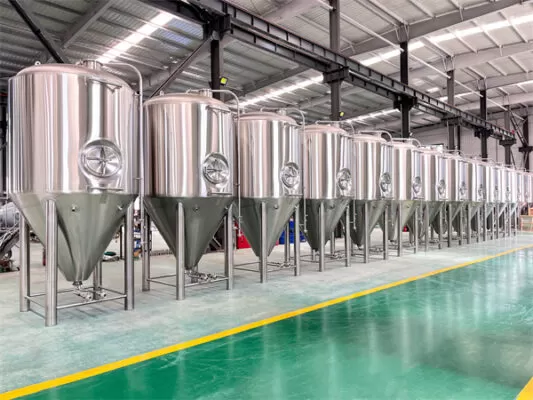
설치, 운영, 유지보수
산업용 양조 하드웨어에는 세심한 설치, 작동 용이성, 예방적 유지 관리 및 즉각적인 문제 해결 지원이 필수적입니다.
표 5: 설치 실행 및 지속적인 장비 관리
| 단계 | 필수 활동 |
|---|---|
| 설치 | 토목, 구조, 기계, 전기, 배관 작업;<br> 장비 배송 처리; <br>교정, 시운전; |
| 작업 | SOP 문서;<br> 검사 일정 <br>물, 에너지, 소모품 |
| 유지 관리 | 예방적 유지 관리 일정 <br>장비 모니터링; <br> 고장 대응 계획 |
| 관리 | 훈련 프로그램 <br>예비 부품 재고; <br>공급업체 피드백 |
Brewers는 장비가 현장에 도달하기 전에 건설 준비 상태를 검증해야 합니다. 표준 운영 절차 및 유지 관리 작업에 대한 직원 교육은 시운전 전 단계부터 시작됩니다. 에너지, 물, 폐수 인프라는 생산 개시 전에 준비되어야 합니다.
양조장 장비 공급업체 선택
경험, 규모, 맞춤화 전문성, 설치 후 지원과 같은 매개변수를 기반으로 유능한 산업용 양조 장비 파트너를 선택하면 원활한 프로젝트 실행이 보장됩니다.
표 6: 양조 하드웨어 조달을 위한 공급업체 평가 기준
| 매개변수 | 평가 기준 |
|---|---|
| 실적 | 사업 연수; 고객 규모; 양조장 포트폴리오 |
| 오퍼링 적합성 | 장비 카탈로그 정렬; 예산 적합성 |
| 맞춤화 기술 | 디자인 유연성; 통합 기능 |
| 주문 이행 | 제조 신뢰성; 품질 관리 |
| 민감도 | 처리 시간을 인용하십시오. 정보 투명성 |
| 판매 후 서비스 | 설치 지원; 유지보수 계약 |
| 참조 | 클라이언트 피드백; 피드백을 위한 양조장 연락처 |
공급업체가 추가로 고려해야 할 사항에는 현지 입지, 수리 인프라, 교육 서비스, 예비 부품 공급 보증 및 업그레이드 프로비저닝이 포함됩니다. 선택 시 기존 설치 현장을 방문하는 것이 좋습니다.
장점, 단점 및 제한 사항
Pros of Industrial Brewing Equipment
While the passion for a perfectly crafted beer might start small, scaling brewing operations demands equipment that can match ambition. This is where industrial brewing equipment steps in, offering breweries a world of advantages beyond simply increased volume. From consistent quality to operational efficiency, let’s dive into the key benefits that this equipment brings to the table.
Quality Ensured, Consistency Guaranteed: Imagine pouring the same beer twice and having vastly different experiences. Inconsistent quality can be the bane of any brewery’s reputation. Industrial equipment combats this by introducing precision and automation. Temperature control systems maintain optimal conditions for each brewing stage, minimizing human error and guaranteeing batch-to-batch consistency. Advanced filtration systems further elevate the game by ensuring clarity and removing unwanted particles, leading to a consistently smooth and satisfying final product.
Efficiency Reigns Supreme: Time is money, and industrial equipment understands this language perfectly. By automating tedious tasks like wort transfer and cleaning, it frees up valuable manpower for brewers to focus on their creative pursuits. Additionally, larger vessels allow for bigger batches, maximizing production output without compromising quality. This translates to increased profitability and the ability to meet growing demand with ease.
Scalability Made Simple: As a brewery grows, its equipment needs to grow with it. Industrial equipment is designed with modularity in mind, allowing breweries to seamlessly add new components or expand existing ones. This eliminates the need for costly equipment overhauls and ensures a smooth scaling process. Whether it’s adding a new fermenter or upgrading filtration systems, industrial equipment empowers breweries to adapt and thrive in a dynamic market.
Safety Always Comes First: Working with large volumes of hot liquids and pressurized systems demands a rigorous focus on safety. Industrial equipment incorporates robust safety features like pressure relief valves and automated shut-off mechanisms, minimizing the risk of accidents and ensuring a safe working environment for everyone involved.
Data-Driven Decisions: In today’s data-driven world, information is power. Industrial equipment often comes equipped with sophisticated monitoring systems that track temperatures, pressures, and other key metrics throughout the brewing process. This wealth of data allows brewers to gain valuable insights into their operations, identify areas for improvement, and optimize their recipes for even greater efficiency and quality control.
Sustainability in the Spotlight: As environmental awareness grows, breweries are increasingly focused on reducing their ecological footprint. Industrial equipment manufacturers are responding with innovative solutions that incorporate energy-efficient features and use sustainable materials. From heat recovery systems to water-saving cleaning protocols, these technologies allow breweries to brew their passion responsibly, minimizing their environmental impact.
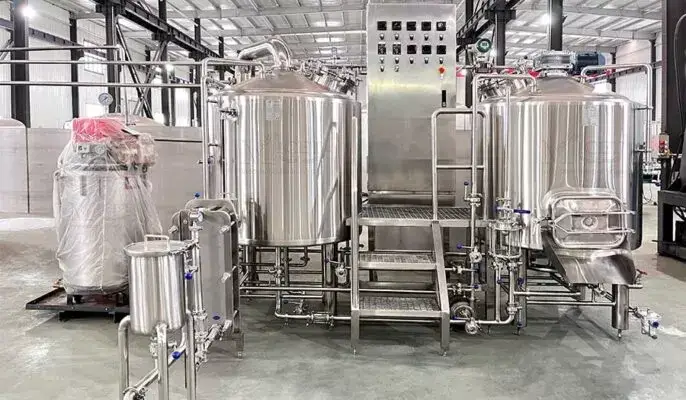
Cons of Industrial Brewing Equipment
The allure of industrial brewing equipment is undeniable. It promises efficiency, precision, and the ability to scale production to new heights. Yet, for passionate brewers, the path paved with stainless steel behemoths might not always be smooth sailing. Before taking the plunge, it’s crucial to acknowledge the potential downsides of this powerful machinery.
The Price of Precision: While consistency is a virtue, excessive control can stifle creativity. Industrial equipment, with its automated routines and standardized processes, can leave little room for experimentation. The magic touch of a hands-on brewer, adjusting temperatures by feel or adding ingredients based on intuition, becomes less relevant. This homogenization might lead to beers that are technically flawless but lack the unique soul that craft breweries are known for.
Flexibility Forfeited: While modularity allows for growth, it doesn’t translate to instantaneous adaptation. Adding a new tank or changing a recipe within an industrial setup can be a complex and time-consuming process. Smaller brew systems, on the other hand, offer the agility to quickly tinker and adjust, embracing happy accidents and spontaneous recipe tweaks that can lead to exciting new discoveries.
The High Cost of Entry: The initial investment in industrial equipment is substantial. Not only are the machines themselves expensive, but their installation and maintenance require specialized expertise and infrastructure. This high barrier to entry can be daunting for small and aspiring breweries, potentially limiting the diversity of voices and brewing styles in the market.
Sustainability Skepticism: While strides are being made towards eco-friendly solutions, industrial equipment inherently consumes more resources than smaller setups. Large-scale brewing typically uses more water, energy, and cleaning chemicals, leaving a bigger environmental footprint. For breweries committed to sustainable practices, this trade-off demands careful consideration.
The Human Touch Fades: Automation is a double-edged sword. While it frees up manpower for other tasks, it also removes the brewer from the direct interaction with the ingredients. This detachment can lead to a disconnect with the brewing process, potentially dulling the passion and connection that draws many to the craft.
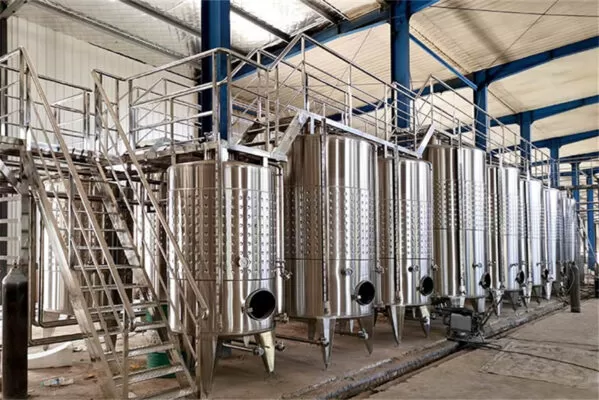
Limitations of Industrial Brewing Equipment
Industrial brewing equipment, with its imposing tanks and gleaming chrome, embodies the power of precision and scale. Yet, behind this façade of efficiency lies a world of limitations. Just as towering mountains offer breathtaking vistas but limit spontaneous exploration, these behemoths of brewing impose boundaries on the creative spirit, demanding a deeper understanding of their constraints.
Size Matters, But Not Always for the Better: While large batch sizes fuel profitability, they can also become creative handcuffs. Experimentation, the lifeblood of craft brewing, thrives on small-scale trials, allowing brewers to refine recipes and explore the subtle nuances of flavors. In contrast, large-scale brewing requires unwavering commitment to a recipe, leaving less room for spontaneous tweaks and serendipitous discoveries.
Flexibility Takes a Backseat: Unlike a sculptor with a lump of clay, brewers with industrial equipment navigate a predetermined path. Adapting recipes or incorporating last-minute ingredient changes becomes a logistical dance, requiring adjustments to temperature profiles and cleaning schedules. This rigidity can stifle the agility needed to seize fleeting opportunities and respond to dynamic market trends.
The Personal Touch Gets Lost: Stepping onto the platform of an industrial brewery, one might encounter a symphony of automated pumps and valves, but the human touch fades into the background. The intimate connection with the brewing process, the intuitive adjustments based on smell and texture, are largely replaced by data-driven decisions and pre-programmed cycles. This disconnect can impact the soul of the beer, potentially sacrificing the unique character and depth that defines craft brewing.
Standardization Breeds Similarity: From the gleaming tanks to the automated processes, industrial equipment embodies uniformity. While this consistency assures predictable outcomes, it can also lead to homogenization. The beers produced, while flawless in execution, might lack the distinctive personality and regional flair that excites craft beer enthusiasts.
Costly Upkeep, Environmental Footprint: The initial investment in industrial equipment is a hefty price tag, but the costs extend far beyond. Maintaining these complex systems demands skilled technicians and specialized cleaning protocols. Additionally, the sheer scale of operation translates to increased water and energy consumption, leaving a larger environmental footprint compared to smaller setups.
The limitations of industrial brewing equipment are not meant to dissuade, but rather to inform. Recognizing these constraints empowers brewers to make informed decisions, leveraging the strengths of these systems while seeking creative workarounds and embracing alternative approaches. Ultimately, the path to brewing excellence lies not in blindly adopting tools, but in understanding their limitations and using them to amplify, not constrain, the brewer’s artistry. Only then can the industrial giants dance in harmony with the creative human spirit, producing beers that celebrate both precision and soul.
표 7: 한계에 대한 주요 이점 비교
| 매개변수 | 장점과 이점 | 단점과 과제 |
|---|---|---|
| 볼륨 | 높은 출력; 규모의 경제 | 조정 복잡성; 목록 |
| 자동화 | 정도; 반복성; 데이터 통찰력 | 유연성이 떨어지는 프로세스 장비 비용 |
| 품종 | 다양한 브랜드 생산 능력 | 추가 탱크; 전환 |
| 품질 | 고급 공정 제어; 상태 안정성 | 엄격한 CIP 요구 사항 |
| 발자국 | 용량에 비해 컴팩트함 | 사이트 개발 요구 사항 |
| 작전 기술 | 전문 기술팀 | 훈련 간접비 |
현대 산업용 맥주 제조 장비는 엄청난 생산성과 효율성 향상을 제공하지만 양조업체는 관련된 상당한 자본 및 운영 비용과 비교하여 이점을 평가해야 합니다.
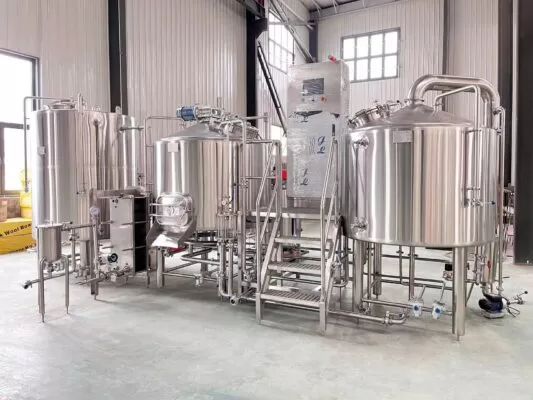
자주 묻는 질문
산업용 양조장 장비 설치에 드는 일반적인 비용은 얼마입니까?
- 비용은 생산량과 자동화 정도에 따라 상당히 다양합니다. 기본 10,000hl 양조장의 경우 약 $500,000부터 최첨단 시설의 경우 500,000hl 양조장의 경우 $500만 이상입니다.
산업용 양조장의 바닥 공간 요구 사항은 무엇입니까?
- 지침에 따라 약 1.5-2 평방피트를 허용합니다. 양조장만을 위해 생산된 연간 맥주 배럴당. 발효, 성숙, 저장을 위해서는 더 많은 면적이 필요합니다.
가장 일반적인 맥주 제조 장비 브랜드는 무엇입니까?
- 선도적인 글로벌 장비 OEM으로는 Alfa Laval, GEA Group, Krones, Paul Mueller 및 Praj가 있습니다. 많은 맞춤형 스테인레스 스틸 제조 업체도 산업 양조장에 서비스를 제공합니다.
마이크로 및 매크로 산업 양조장을 정의하는 생산량은 얼마나 됩니까?
- 소규모 양조장은 연간 15,000 배럴 미만을 생산합니다. 대형 매크로 양조장은 연간 600만 배럴 이상을 생산합니다.
산업용 양조장 설치에는 얼마나 많은 시간이 필요합니까?
- 일정은 규모에 따라 6~12개월에 걸쳐 현장 준비, 장비 배송 일정 및 설치, 시험 운영, 테스트 양조, 상업 출시를 포함합니다.




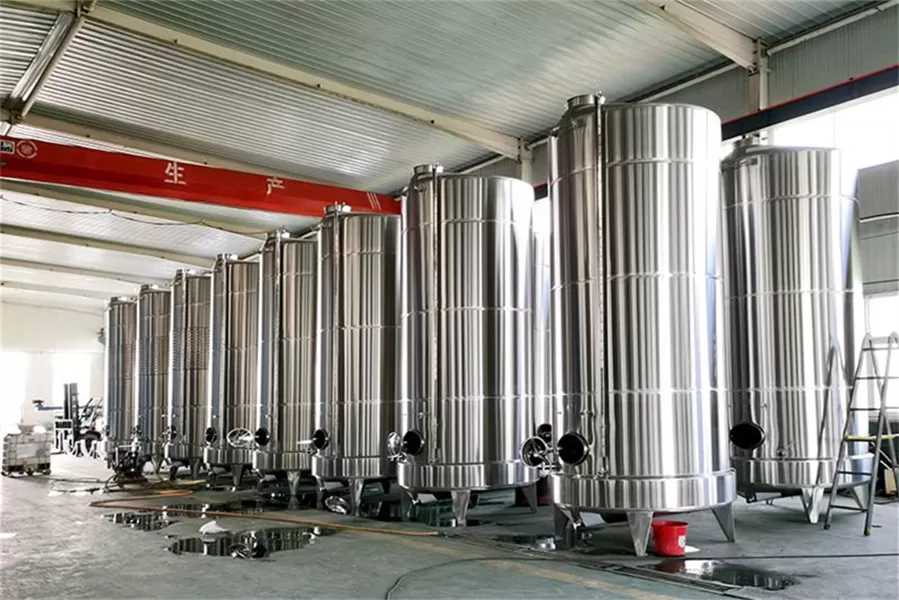
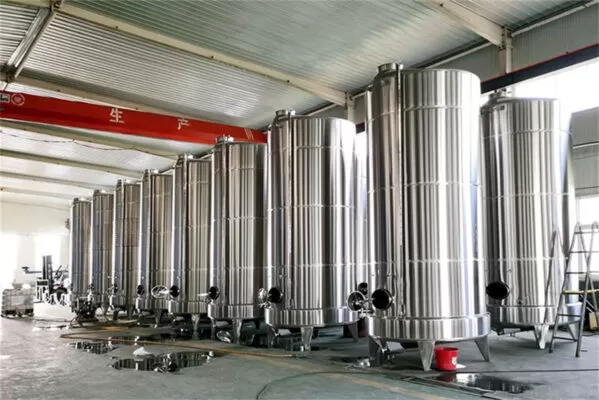
Just wish to say your article is as surprising The clearness in your post is just cool and i could assume youre an expert on this subject Fine with your permission allow me to grab your RSS feed to keep updated with forthcoming post Thanks a million and please keep up the enjoyable work